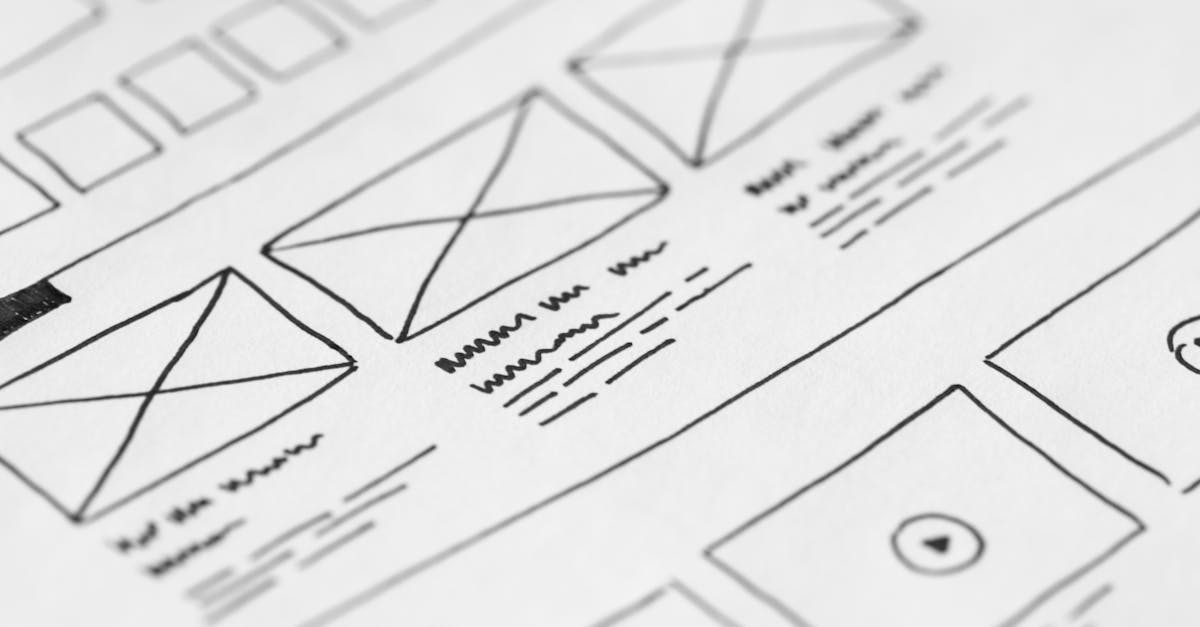Feb 16, 2025
Grid Layouts for Website Design

At its core, designing a website involves a complex interplay of various elements, from typography and color schemes to navigation and content layout. One of the fundamental aspects of web design that significantly impacts both the aesthetics and functionality of a website is the grid layout.
Grid layouts are essentially a system of horizontal and vertical lines that help designers organize and structure the content on a webpage. This design approach has been universally embraced by web designers and developers due to its ability to create visually appealing and user-friendly websites.
Typically, a grid layout consists of a series of columns and rows that act as a guide for placing different elements such as images, text, and buttons on a page. By adhering to a grid system, designers can achieve a sense of balance, consistency, and order in their designs, ultimately improving the overall user experience.
When it comes to web design, a well-executed grid layout can greatly enhance the readability and visual appeal of a website. By aligning elements along the grid lines, designers can create a harmonious composition that guides the user's eye and promotes a seamless browsing experience.
In essence, grid layouts offer a structured framework that streamlines the design process and helps maintain a cohesive look across different pages of a website. Whether designing a portfolio, e-commerce site, or blog, implementing a grid layout can provide a solid foundation for building an aesthetically pleasing and functional website.
When speaking about responsive design, grid layouts are commonly used to create flexible and scalable designs that adapt to various screen sizes and devices. By designing with a responsive grid system in mind, designers can ensure that their websites look great and function effectively across desktops, tablets, and smartphones.
Equally important, grid layouts play a crucial role in enhancing the overall cohesiveness and professionalism of a website. When every element is aligned to the grid, the website appears well-structured and visually appealing. This attention to detail not only improves the aesthetics but also instills a sense of trust and reliability in the visitors.
Besides, utilizing grid layouts can make the maintenance and updates of a website more efficient. By following a consistent grid structure, designers and developers can easily add new content or make changes without disrupting the overall design integrity. This systematic approach streamlines the editing process and ensures that the website remains visually pleasing and functional over time.
On the other hand, grid layouts also contribute to the branding and identity of a website. Consistent grid usage throughout various pages creates a unified look that reinforces the brand image. Users are more likely to remember and recognize a website that maintains a coherent layout, fostering a sense of familiarity and trust.
In reality, the power of grid layouts lies in their ability to establish visual hierarchy and guide the user's journey through the website. By strategically placing content and elements within the grid structure, designers can direct attention to key information, such as calls to action or important messages. This deliberate arrangement influences how users interact with the site and can significantly impact their overall experience.

An Overview of Structured Website Design Using Grids
In particular regard to responsive design, grid layouts play a crucial role in ensuring that websites adapt seamlessly to various devices. By utilizing responsive grid systems, designers can maintain a consistent and visually appealing layout across different screen sizes, enhancing the user experience regardless of the device being used.
Naturally, the versatility of grid layouts extends beyond aesthetics; it also impacts the functionality of a website. With a well-structured grid system in place, developers can easily navigate through the website's code, making updates and modifications more efficient and less prone to errors. This streamlined process contributes to the overall maintenance and sustainability of the site.
Furthermore, due to their systematic approach, grid layouts facilitate collaboration among design and development teams. By adhering to a predefined grid structure, team members can work cohesively towards a common goal, ensuring that every element on the website aligns with the established design principles.
A prime example being the e-commerce sector, where grid layouts are indispensable for showcasing products in an organized and visually appealing manner. By aligning images, descriptions, and prices to a grid system, online retailers can create an engaging shopping experience that guides users seamlessly from browsing to purchasing.
With this in mind, it's evident that grid layouts are not just a design trend but a fundamental tool for creating websites that are both aesthetically pleasing and highly functional. Whether for organizing content, establishing visual hierarchy, or enhancing user experience, grid layouts continue to play a vital role in the ever-evolving world of web design.
To further elaborate, the meticulous application of grid layouts in website design not only enhances the visual appeal and functionality of a site but also contributes significantly to user engagement and retention. By structuring content, images, and interactive elements within a grid framework, designers can create a seamless user experience that captivates visitors and encourages interaction.
Moreover, grid layouts serve as a versatile tool that can adapt to the ever-changing landscape of web design trends and technological advancements. The flexibility of grids in accommodating responsive design requirements ensures that websites can cater to a diverse range of devices, from large desktop screens to mobile phones, without compromising on aesthetics or usability.
In conclusion, the strategic utilization of grid layouts forms the backbone of a successful website, providing a foundation for organizing content, maintaining visual consistency, and optimizing user experience. As the digital realm continues to evolve, grid systems remain a fundamental element in the designer's toolkit, guiding the creation of innovative and user-centric web experiences. By embracing the structured approach offered by grid layouts, designers can transcend the boundaries of conventional design and construct websites that are not only visually captivating but also functionally robust, ensuring a seamless browsing journey for users worldwide.

Title
I'm a paragraph. Click here to add your own text and edit me. It's easy.

Title
I'm a paragraph. Click here to add your own text and edit me. It's easy.

Title
I'm a paragraph. Click here to add your own text and edit me. It's easy.
